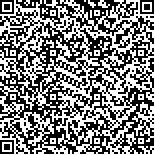下载中心
优秀审稿专家
优秀论文
相关链接
摘要

中国是草原火灾频繁国家,草原火灾对牧场和牲畜生产造成了严重的破坏。MODIS每天可以获得36个通道的卫星数据,为草原火灾迹地研究提供了新的数据源。通过实验研究,根据火灾迹地在MODIS短波红外波段的光谱特征,提出了GEMI-B指数以突出火灾迹地的特征,并进一步提出了基于GEMI-B指数且适用于火灾迹地面积提取的时间序列数据合成方法。同时发展了一种自动提取草原区域火灾迹地的方法,利用火点作为初始种子点,采用种子点扩散算法在时间序列合成数据的GEMI-B指数图像上实现火灾迹地自动提取。
Wildfires release large amount of green house gas,smoke and aerosols which strongly impact on global climate.In China,wildfire in steppe area caused greatly economic loss.Remote sensing is a powerful tool to monitor fire and estimate burn scar area.Based on GEMI(Global Environment Monitoring Index) and spectral characteristics of burn scar in short wave region,a new index GEMI-B(Global Environment Monitoring Index-Burn scar) is proposed to extract burn scar in steppe area.In order to avoid the daily disturbance of cloud,aerosol,sensor zenith and sunglint,new multi-temporal composite methods based on maximal GEMI-B are proposed in the study to composite time series MODIS data.Based on active fire(hotspot) map,an automated extraction procedure has also been developed.A case study is carried out for the wildfire occurred in May,2003 on the border area between China and Mongolia.It is suggested by the results that the GEMI-B index,compositing algorithm and automated extraction method have potential to be applied on burn scar mapping in the semi-arid or arid areas.

